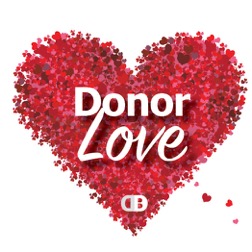 This month, the Donor By Design Team has love and appreciation on our minds… specifically how we “love up” our donors. Today’s topic: donor love languages.
This month, the Donor By Design Team has love and appreciation on our minds… specifically how we “love up” our donors. Today’s topic: donor love languages.
Good donor stewardship is a deceptively simple practice. It seems so easy to say thanks and to keep donors informed on why their gifts matter. And yet, for all our efforts, we watch in dismay as donors leave us because they don’t feel appreciated or don’t feel like their gifts made a difference.
This shouldn’t be surprising. Anyone who’s ever been in a relationship knows how easy it is for even well-meaning and happy couples to inadvertently hurt one another and seem unable to show how much they care for each other.
Psychologist Gary Chapman has written extensively on this topic and created a framework called “The 5 Love Languages.” This framework can apply to romantic partners, families, teams, and more. We are all very different in how we “feel” loved and appreciated, which makes it easy for our efforts to show gratitude fall on deaf ears.*
While you can’t do an in depth “love languages” study* on each of your donors, you can get better at saying thank you in a variety of different ways, increasing the likelihood that your donors will get the message.
- Words of Affirmation. You’ve got to tell your donors how you feel about them. “We are in receipt of your gift of $100 on January 17, 2017” is not the same as “You saved a life today” or “We couldn’t do it without you.” Make sure your communications – both written AND in conversation clearly and personally express your gratitude and the impact the donor has made. It should also go without saying that “I said ‘thank you’ last year so don’t they already know how I feel?” is not a recipe for a healthy (donor) relationship.
- Quality Time. It makes us cringe every time we hear it in a feasibility study, but it comes up distressingly often: a donor tells us that, since they gave that last gift, they haven’t heard anything from the organization until they were asked again. You can’t rush stewardship. Take the time to inform, listen to, learn about and connect with donors… even if it means that you have to wait a little longer before asking.
- Receiving Gifts. Not everyone likes receiving physical tokens of appreciation, but some people absolutely love it. Pay attention to this, especially with your major gift donors. Gifts don’t have to be expensive, but there are donors who will bask in a piece of art one of the children in your program made or will use the branded tote bag you gave out at your special event with pride and fond remembrance. Make sure you have gifts to give for those who will feel appreciated by receiving them.
- Acts of Service. While you don’t have to clean your donor’s garage (although your spouse might appreciate it if you’d take a crack at yours), you can be sure that following through on your promises and being of service to a donor can do a lot to draw them closer to your organization. Pay attention when a donor asks for something – maybe for you to talk to their grandson about nonprofit careers or to speak to another board they serve on. If the request is above board and something you can do, why not show your appreciation by doing them the service?
- Physical Touch. I’ll just pause here a moment for you to get all your “You mean I should touch our donors?!?” comments out. It’s OK. I have a silly sense of humor too. I’ll wait. … You back? Here’s what I mean when I think of physical touch and donor appreciation: get the donor to see your program in action in person. For some donors, nothing will be as meaningful as watching their dollars really making change by seeing and touching the building they helped to build, talking to the people whose lives are being changed, or visiting the places where deep need still exists. A thank you note will pale in comparison to an invitation to “ride along” and see the mission in action for an afternoon.
Showing donors how much they mean to you doesn’t have to cost a lot of money or even take a ton of your time. But it does require being flexible and observant, paying attention to what makes a donor’s eyes light up and what things they gloss over as unimportant. When you employ a variety of love languages in your donor stewardship at all levels, you have a greater chance of your message of gratitude being really heard by more of your donors.
And your significant other might appreciate you flexing some of your newly-discovered love language muscle too.
* Want to learn more about the 5 Love Languages? Learn more at http://www.5lovelanguages.com/gary-chapman/

